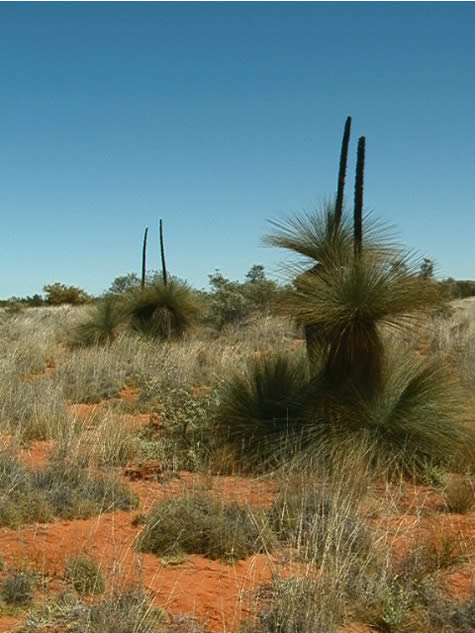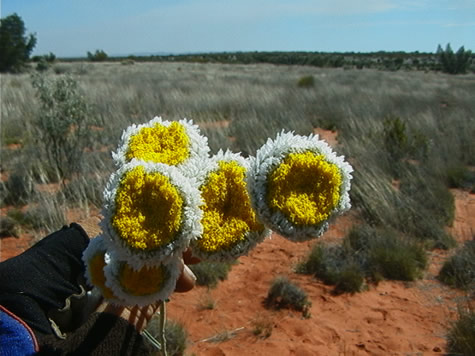2001 September 16, Derwent Station.
As we reached the flat lands to the north of the MacDonnel Ranges, the vegetation changed from a very native natural looking landscape, to farmed lands, with tall yellow daisies (camel weed), brown cattle, and windmills. While this is very pretty in a rural way, some of the unique native species we’ve encountered will now not be seen again for some time.
One remarkable example of the vegetation we have been amongst is the blackboy, or native grass tree, of the genus Xanthorrhoeaceae. Their distinctive fire-blackened trunks and skyline silhouettes of grass tufts accompanied us as we passed along the low ranges surrounding Gosse Bluff Crater.

Blackboys are the slowest developing plant in the world, growing just inches each century, and taking fifty years to appear above the ground after the germination of their seed. An interesting phenomenon is that the fastest growing flower in the world springs from the top of the tree in a lily-like spike – two amazing extremes in one plant.
Without regular burning, the growth of the blackboy can be stunted even further, and all of the large plants we saw showed signs of recent burning. Their extraordinary form protects them from being completely destroyed by the wildfires on which they thrive.
Another special plant which we saw amongst the xanthorrhoea is the poached egg daisy – the photograph speaks for itself.

Can you find a borderline in your local environment where the types of plants which can grow, change? Think about why they change – perhaps it’s the altitude, a different soil base, nearness to water, or more protection from the elements. Is it a natural border, or does it reflect the different ways in which humans use the land?
bel